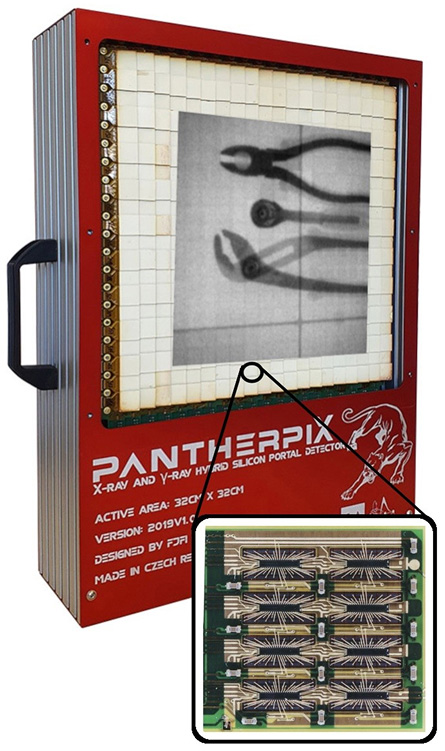High energy physics demands advanced detection technologies capable of operating in extreme environments with unprecedented precision.
Our group develops next-generation silicon detectors for future collider experiments, including monolithic sensors for lepton colliders, radiation-hard hybrid and monolithic designs, and fast-timing sensors such as LGADs.
We also adapt HEP technologies – such as Timepix-based readouts – for visible light detection in novel imaging applications.
Our work spans sensor design, TCAD and Allpix simulations, and extensive testbeam campaigns.
We collaborate closely with universities, industrial partners, and CERN through the DRD3 initiative, and contribute to inner tracker development and testing for the ePIC detector at the Electron-Ion Collider.
Space missions involving long-duration human presence and advanced propulsion systems demand robust radiation monitoring and shielding strategies.
Our group develops radiation-hard components and monolithic pixel detectors tailored for space dosimetry.
We engage in end-to-end system simulations, detector calibrations, and environmental modeling in cooperation with local as well as international research institutes and industry partners.

As part of emerging efforts to address legacy nuclear systems in orbit, we contribute to mission concepts aiming to characterize and monitor defunct nuclear reactors in Earth orbit using gamma-ray and alpha spectroscopy, radiation mapping, and optical inspection to better understand the long-term effects of the space environment on nuclear-powered spacecraft.
Medical and radiation imaging increasingly rely on advanced sensor technologies to achieve higher precision, efficiency, and spectral sensitivity.
Our group develops both hybrid and monolithic detectors based on silicon and CZT sensors tailored for X-ray and radiation imaging applications. In hybrid architectures, we focus on energy-resolved (color) imaging through photon counting and on-chip energy clustering across multiple energy bins.

For large-area applications, we design detectors with high total ionizing dose (TID) tolerance for reliable performance in harsh radiation environments.
We also contribute to the development of ultrafast X-ray cameras for diagnostics in plasma physics experiments.
Quantum sensing is a rapidly emerging frontier in measurement and imaging technologies, leveraging quantum principles such as entanglement to attain sensitivity and resolution unattainable with classical methods.
In our projects we are focusing on quantum imaging, quantum communications, and quantum telescopy, aiming to dramatically improve performance in multiple applications.

Quantum approach, by employing spatial, spectral and temporal correlations of multiple photons from quantum sources offers advantages and provides additional opportunities such as low light imaging or new sensing approaches in optical interferometers ...
